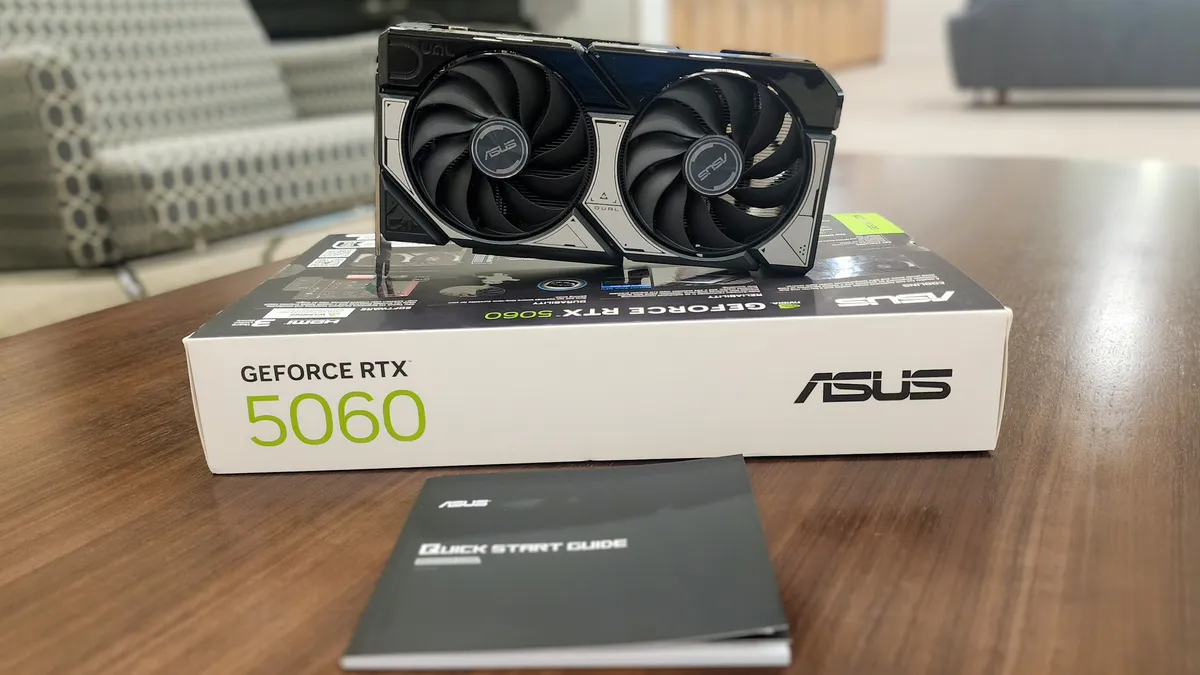
Nvidia is gearing up to launch the GeForce RTX 5060 on May 19, with prices starting from an appealing $299. This latest addition to the RTX family is promising outstanding performance for 1080p gaming with impressively high frame rates. However, there is a significant concern looming over this release—its 8GB of video memory (VRAM). As video memory plays a crucial role in storing in-game textures and shaders, gamers are understandably anxious about whether the RTX 5060 can keep up with the demands of modern AAA titles.
As recent games such as Indiana Jones and the Great Circle stipulate a minimum of 12GB of VRAM, the RTX 5060's 8GB may seem inadequate to some. This leads to a pressing question: while the RTX 5060 offers a budget-friendly option, could the slightly more expensive RTX 5060 Ti be the true base model for serious gamers? To answer this, we tested five popular titles at 1080p resolution to evaluate performance.
This early look at the RTX 5060 reveals promising results, especially under Nvidia's optimized scenarios. The titles we tested include Avowed, Cyberpunk 2077, Doom: The Dark Ages, Hogwarts Legacy, and Marvel Rivals. When sticking to these well-optimized games, players can expect an enjoyable experience at 1080p, largely thanks to the DLSS 4 technology that enhances performance.
DLSS 4 has proven to be a game-changer, enabling the RTX 5060 to achieve remarkable frame rates even at 1440p. While it may not rely solely on traditional rendering techniques, the AI-driven frame generation capabilities significantly enhance performance. During our testing, we recorded frame rates exceeding 200 FPS in Doom: The Dark Ages, particularly with multi-frame generation set to 4x. This impressive feat demonstrates how AI can alleviate VRAM demands, with a texture pool size of just over 1.5GB—showcasing the effectiveness of Nvidia's neural rendering techniques.
In our tests, Cyberpunk 2077's benchmarking tool did not accurately reflect the RTX 5060's performance, primarily due to the pre-release driver used for testing. While the game reported an average of 34.97 FPS, this figure starkly contrasts with Nvidia's claimed 149 FPS. However, using Frameview, we observed significantly higher numbers, indicating that players can expect better performance than what the benchmark suggests.
Another notable aspect of the RTX 5060 is its DLSS override settings within the Nvidia app. Gamers often face challenges when accessing all available DLSS 4 options in supported titles. While manual overrides are necessary, the process can become cumbersome and may discourage less experienced users. Although our team, equipped with years of PC building experience, found it manageable, simplifying this process or providing an automated option could greatly enhance the user experience.
Once gamers navigate the DLSS settings, the results can be remarkable. For instance, Avowed, when configured with Epic settings and DLSS set to quality with multi-frame generation 4x, achieved an impressive 190 FPS at 1080p. Similarly, Hogwarts Legacy consistently surpassed Nvidia’s claim of 156 FPS at 1080p, albeit requiring significant tweaking in PC settings, especially concerning ray tracing options.
Despite the challenges associated with the 8GB of VRAM, our initial testing offers reasons for optimism regarding the RTX 5060. The AI enhancements that facilitate high frame rates without noticeable ghosting provide a smooth gaming experience. However, the limitations of VRAM continue to raise questions that we aim to explore in further testing. Stay tuned to Tom’s Guide for comprehensive reviews and insights into just how well the RTX 5060 performs in diverse gaming scenarios.